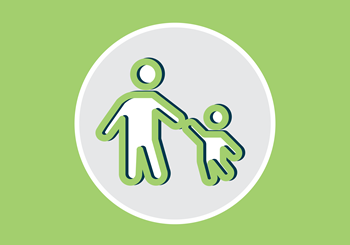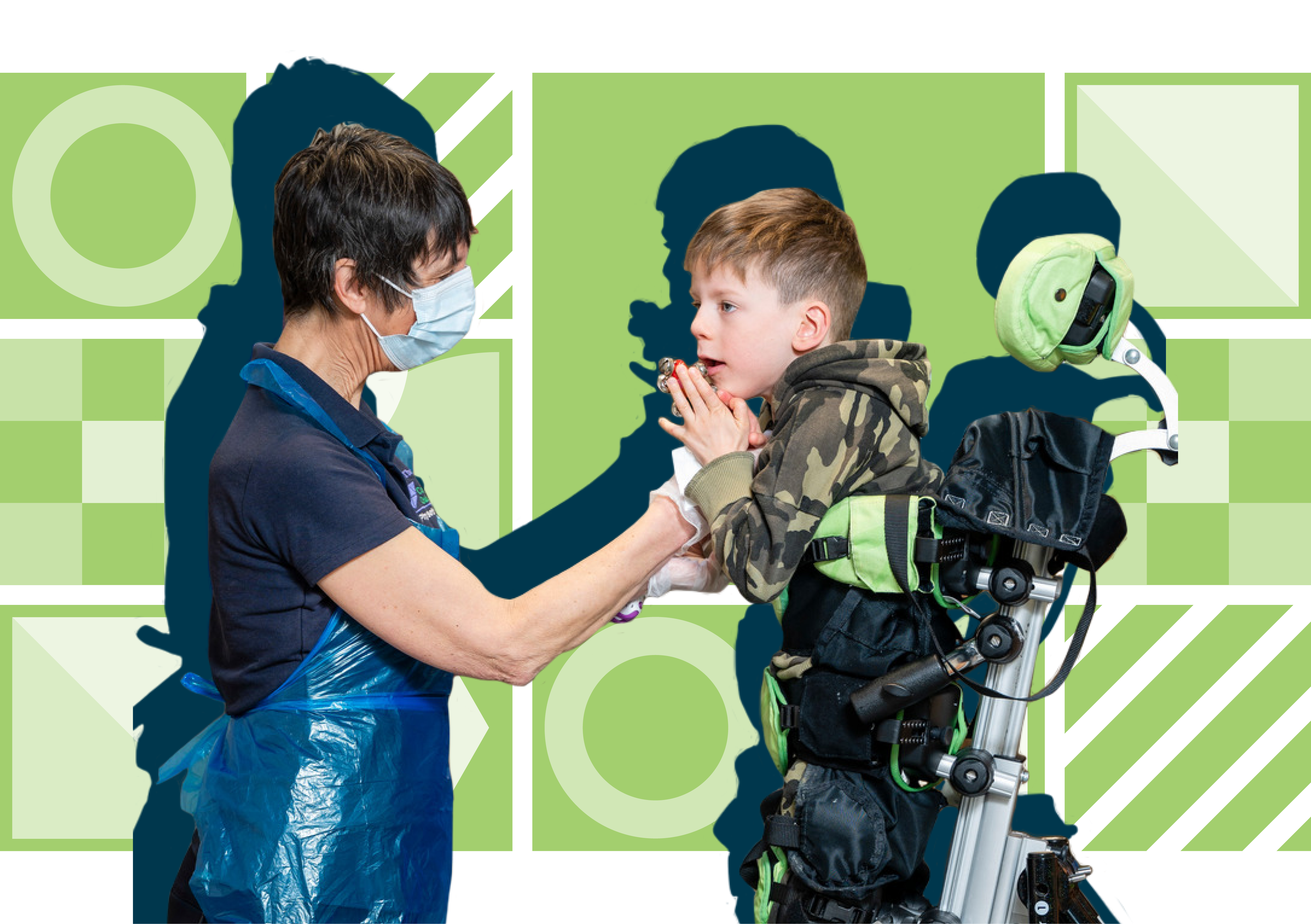Wider determinants

Wider determinants
Wider determinants, also known as social determinants, are a diverse range of social, economic and environmental factors which impact on people’s health and wellbeing. From a child’s perspective, factors can include the type and condition of housing that children live in, access to safe, open spaces to play, children’s access to amenities and services in their local community, children’s education attainment, their family’s income, exposure to toxins, infections, allergens and the family environment in which children grow up.
Addressing the wider determinants of health and wellbeing has a key role to play in reducing health inequalities. Health inequalities are the unfair differences in people’s health across social groups and between different population groups. Health inequalities for children and young people can relate to negative health outcomes such as low birth weight, poor oral health and high levels of obesity.
Inequalities can also increase exposure to risk factors in the child’s environment that lead to poor health outcomes. These include poor diet, lack of physical activity, parental drug or alcohol misuse, being in care, living in a poor physical environment and family poverty.
The national approach in Scotland to improving outcomes and supporting the wellbeing of children and young people is Getting it right for every child (GIRFEC). Getting it Right for Every Child uses a rights based approach and highlights that all children should have the right to the highest attainable standards of physical and mental health, access to suitable healthcare and support in learning to make healthy and safe choices.
The Scottish Government respects and protects the United Nations Convention on the Rights of the Child (UNCRC). These rights state that children and young people must grow up loved, safe and respected to reach their full potential. Fulfilling children’s rights is fundamental to protecting and improving children’s health and wellbeing. Reducing health inequalities is essential to protect children’s right to health and enhance their wellbeing.
The Triple AAAQ Framework are standards that public health should aim to deliver in order to create a fairer and healthier Scotland. The right to health framework promoted by Public Health Scotland is relevant for all and highlights that to address inequalities, services should be:
- accessible
- available
- appropriate
- high quality.

What do we know?
- Inequalities continue to exist with those in the most deprived areas in Scotland. Those living in the lowest income households have been found to have worse health outcomes, and higher exposures to risks for poor outcomes, than their more advantaged counterparts. Children in the poorest fifth of areas are at least twice as likely to suffer obesity and infant mortality or to miss out on childhood immunisations. (Health Foundation Scotland (2023))
- There is also a significant poverty-related attainment gap for primary school pupils in Scotland: pupils living in the most deprived fifth of local areas have lower levels of educational attainment than those from less deprived neighbourhoods. (Health Foundation Scotland (2023))
- These inequalities are a result of the circumstances in which children live, including child poverty. This has likely been exacerbated by the cost-of-living crisis.
- Families with children are also increasingly likely to live in the private rented sector, which tends to be of lower quality and affordability than other tenures. (Health Foundation Scotland (2023))
- Children and adolescents from the most socio-economically disadvantaged areas are three times more likely to develop mental health problems than peers from less deprived areas. (Public Health Scotland)

How can AHPs contribute to this aspect of public health?
- Understand the impacts of deprivation and socio-economic inequalities in supporting children, young people and families in their communities.
- Consider how accessible their services are and where services are provided eg offering appointments in family homes, community resources or in education.
- Consider how the workforce is allocated within your service and, when vacancies exist, how to mitigate impact on providing services to deprived areas
- Signpost to appropriate services, both in healthcare and non-healthcare eg financial supports.
- Remove barriers which may exist in accessing health services eg by having open, easy access ways of contacting the service, mitigating costly travel requirements, considering language barriers, considering access to digital resources.
- Consider the impact on inequalities from service redesign
- Influence policies and strategies for example considering whether ‘did not attend’ policies take account of any health inequalities that may exist. Considering if services take account of digital poverty.
- Contribute to locality planning groups who are responsible for addressing priorities set by local communities
- Plan interventions appropriately taking account of potential service user factors, eg homelessness. AHPs can personalise care for individuals from different cultures, ethnicities, family setup, languages and socio-economic situations from their own.
- Understand the hidden problem of low health literacy Making it Easy: A Health Literacy Action Plan for Scotland and the impact that this has on the ability to access, understand, engage and participate in support and interventions.

- Use techniques and approaches in your practice to promote effective communication and meet people’s health literacy needs. (The Health Literacy Place – Helping people in understanding modern healthcare).
- Reduce barriers in accessing education, social and leisure access to social and leisure activities.
- Promote nurturing and inclusive environments for children in the early years.
- Promote and support inclusive home and educational environments eg working in partnership to provide equipment and adaptations for children with additional support needs.
- Undertake trauma informed practice and consideration of Adverse Childhood Experiences - Overview of ACEs - Adverse Childhood Experiences (ACEs)
- Understand and apply a rights-based approach to strengthen work to address health inequalities and improve children’s health and wellbeing.
- Support resilience as a protective factor at an individual child level (eg problems solving, self-regulation) and at a family/community level (eg fostering positive relationships with caring adults).
Examples:
The Porridge Pot – Dietitians in NHS Forth Valley helped to tackle inequalities and raise awareness of the importance of eating a healthy breakfast. Porridge pot packs were developed and distributed in the community with recipe card resources and a Facebook page.
Family Learning Sessions – Speech and Language Therapists in NHS Forth Valley work closely with schools in areas of high deprivation to promote language rich and nurturing environments. Speech and Language Therapists offer support to education staff and deliver family learning sessions with fun, engaging ideas for building children’s spoken language skills in the home environment.
Wheelchair loan service – The Women and Children’s Paediatric Orthotic Service in the Royal Hospital for Children (RHC) in NHS Greater Glasgow and Clyde provide a short term loan wheelchair service for children and young people treated at the RHC. This service assists with early mobility and discharge from hospital and enables them to continue to engage with education, often facilitating a quicker return to school following injury or accident.
Was not brought – AHPs across Scotland have influenced policy by introducing a ‘was not brought’ option for recording non- attendance at appointments.
Dinner at Dunbar Grammar School (DGS)– is an intergenerational project where young people provide weekly social get togethers for local older people. Pupils prepare a nutritious meal, then all generations sit down together to enjoy food and each other's company.
View and share more examples and case studies on the AHP Children and Young People Virtual Community of Practice Teams channel

 Reflection points
Reflection points
- How are you/your team addressing heath inequalities with specific communities?
- How well do you know the area your service covers regarding SIMD and other health inequalities indicators? Who can help you gain this knowledge?
- Have you identified any quick wins - eg improvements that could be made easily with no additional resource?
- How often do you monitor your requests for assistance and service provision from health inequalities perspective and create action plans to address any anomalies the data presents?
- What other potential ways could you/your team address health inequalities?


Wider determinants
